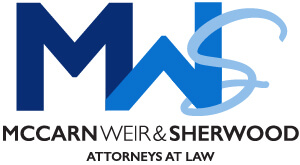Flores v. Zimprich, 559 S.W.3d 223 (Tex. App.—El Paso 2018, no pet.) held that a property owner met his burden of proof to establish his ownership interest, along with the boundary between two parcels of land, and that a correction deed between the parties was valid. Martinez owned an undivided tract of land and the residence and commercial building located on it. The commercial building was located on Socorro Road and the residence on Dini Rozi Road. Martinez sold the Socorro portion of the tract, with the commercial building, to Aleman and the Socorro note to Luevano. In 2006, a plat was prepared of the Dini Rozi subdivision (the “Plat”). Later in 2006, Martinez sold the Dini Rozi portion of the tract, with the residence building, to Betts. Aleman stopped making payments on the note, and Luevano accepted a deed in lieu of foreclosure. The Betts then sold the Dini Rozi property to Heredias, and Heredias thereafter constructed a wall between the two properties. In March 2007, Heredias went to the City of Socorro to apply for a permit, and the City requested a survey. In August 2007, Heredias signed the 2006 Plat. Upon noticing a discrepancy between the Betts deed and the Plat, Luevano subsequently approached Heredias about signing a Correction Deed, indicating its purpose as a lot split. Mistakenly believing the Correction Deed to be related to their discussions with the City, Heredias signed the Correction Deed. The Correction Deed stated that the land conveyed was 0.3209 acres, but the size was actually smaller as a result of the metes and bounds correction. In 2008, Luevano conveyed the Socorro property to Zimprich. Both Zimprich (the owner of the commercial tract) and Heredias (the owner of the residential tract) made improvements to the disputed land. In 2011, Zimprich filed suit under a trespass to try title claim and sought judgment for removal of the wall. Heredias counterclaimed with a quiet title suit and a claim against Luevano for fraud. During the trial, Heredias signed a Deed of Trust which contained the same legal description as the Correction Deed. The trial court held that Zimprich was the owner of the disputed land, and the wall was on his land. The court also held that Luevano fraudulently procured the Correction Deed. The court of appeals affirmed.
The court first addressed Heredias’ assertion that the Correction Deed should be invalid because (1) there were no facial imperfections in the original deed or in the Heredias’ chain-of-title, (2) Heredias did not agree to the Correction Deed, (3) there was no mutual mistake which caused a defect in the original deed, and (4) a correction deed cannot convey an additional, separate parcel of land, not included in the original deed. Heredias relied on Myrad, a Texas Supreme Court case, which held that a correction deed could not be used to include an additional parcel of land not described in the original deed. Responding to Myrad in 2011, the Texas legislature enacted statutes which allow correction deeds to make both material and nonmaterial deed corrections under certain circumstances. The statutes apply to correction instruments filed before September 1, 2011, as is the case of the Correction Deed that was executed by Heredias. The court noted Heredias failed to mention the statutes and the statutory requirements for correction deeds in their brief, and noted that it was not permitted to argue on behalf of Heredias nor make their arguments for them. The applicable statutes do not limit corrections to facial imperfections in the original deed or chain-of-title nor require the existence of a mutual mistake as the cause of defect in the original deed. While Heredias argued that they did not agree to the Correction Deed because of the fraud, the court held that they evidenced acquiescence to the changes by signing the Plat and Deed of Trust, which contained the same metes and bounds as the Correction Deed. Accordingly, the court overruled the argument.
Heredias next asserted that Zimprich failed to meet an element of his trespass to try title action—establishing superior title. The court noted that when the sole dispute involves a boundary location, as in the present case, a recorded deed is sufficient to establish superior title. Otherwise, the court imposes strict proof requirements. To prove the correct metes and bounds, Zimprich introduced multiple recorded documents, including: (1) the deed from Luevano to Zimprich; (2) the correction deed from Martinez to Aleman; (3) the corrected deed in lieu of foreclosure from Aleman to Luevano; (4) the correction deed from Martinez to Betts; (5) the correction deed from Betts to Heredias; (6) the Plat signed by Heredias; and (7) the Deed of Trust signed by Heredias. The court concluded that the foregoing were sufficient proof to establish Zimprich’s interest in the disputed land and the correct metes and bounds.
Heredias additionally contended that the trial court erred by failing to declare the Correction Deed void as a remedy for their prevailing fraud claim against Luevano. “An action to cancel a deed procured by fraud and vest title to the realty in the grantor is a suit to quiet title.” An element of a suit to quiet title is proving the other party’s claim to title invalid. The court noted that a ruling in favor of Zimprich on his trespass to try title claim is effectively a ruling against Heredias on a suit to quiet title, and the court thus overruled the issue.
Flores included a lengthy dissent wherein the dissenting judge disagreed that Zimprich should prevail on his trespass to try title suit. The judge disputed the majority’s analysis of caselaw concerning the proof requirements of a “boundary dispute” and additionally argued there were two complicating factors involved here—fraudulent misrepresentations and correction instruments. The dissenting judge concluded Zimprich’s trespass to try title suit should have instead been subject to strict proof requirements as opposed to the relaxed requirements applied in boundary disputes, and the judge concluded that Zimprich’s claim did not satisfy the stricter requirements. Additionally, the judge noted Zimprich mistakenly relied on a Deed of Trust and Plat to prove ownership, but these instruments cannot convey title to property. The majority also concluded that Heredias acquiesced to the change in metes and bounds by signing the plat and the Correction Deed, but the dissenting judge found that it was impossible to prove Heredias acquiesced based on signatures that were obtained through fraud.
Significance
The case serves as a reminder that parties may make material and nonmaterial deed corrections under certain circumstances, and great care should be taken when describing property being conveyed.

